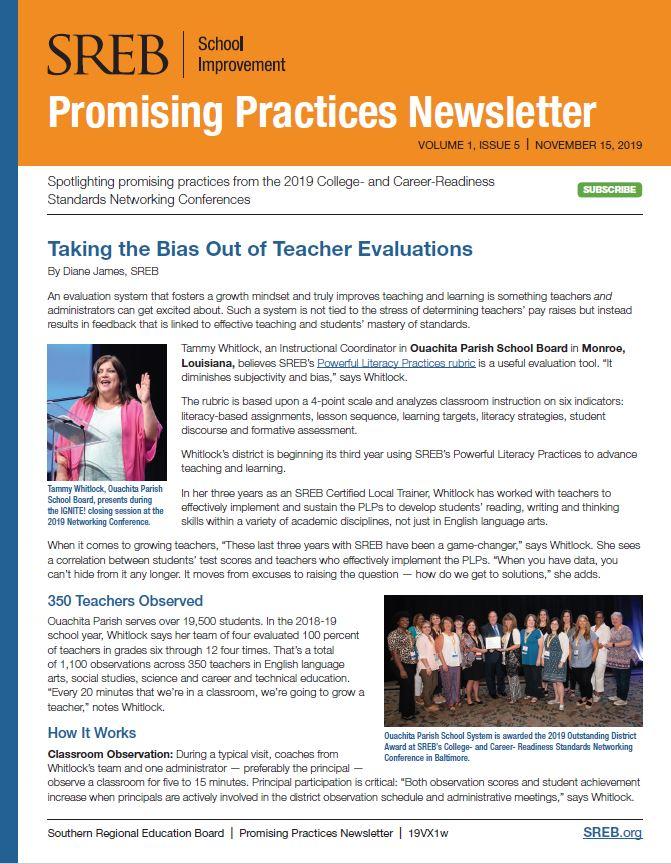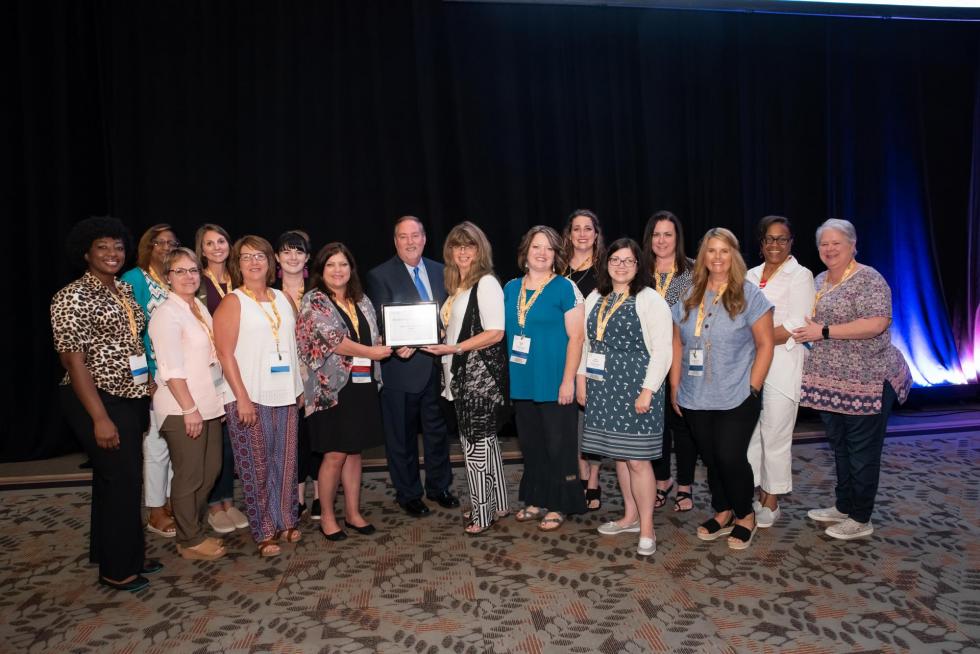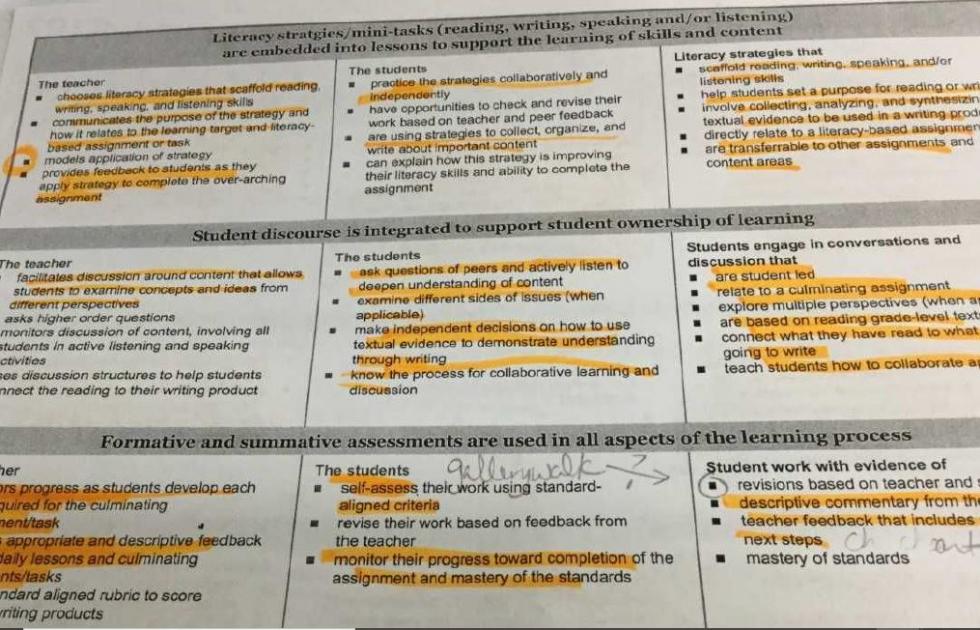Taking the Bias Out of Teacher Evaluations
Promising Practices From the 2019 Making Schools Work Conference
 An evaluation system that
fosters a growth mindset and truly improves teaching and learning
is something teachers and administrators can get excited about.
Such a system is not tied to the stress of determining teachers’
pay raises but instead results in feedback that is linked to
effective teaching and students’ mastery of standards.
An evaluation system that
fosters a growth mindset and truly improves teaching and learning
is something teachers and administrators can get excited about.
Such a system is not tied to the stress of determining teachers’
pay raises but instead results in feedback that is linked to
effective teaching and students’ mastery of standards.
Tammy Whitlock, an Instructional Coordinator in Ouachita Parish School Board in Monroe, Louisiana, believes SREB’s Powerful Literacy Practices rubric is a useful evaluation tool. “It diminishes subjectivity and bias,” says Whitlock.
The rubric is based upon a 4-point scale and analyzes classroom instruction on six indicators: literacy-based assignments, lesson sequence, learning targets, literacy strategies, student discourse and formative assessment.
 Whitlock’s district is beginning
its third year using SREB’s Powerful Literacy
Practices to advance teaching and learning.
Whitlock’s district is beginning
its third year using SREB’s Powerful Literacy
Practices to advance teaching and learning.
In her three years as an SREB Certified Local Trainer, Whitlock has worked with teachers to effectively implement and sustain the PLPs to develop students’ reading, writing and thinking skills within a variety of academic disciplines, not just in English language arts.
When it comes to growing teachers, “These last three years with SREB have been a game-changer,” says Whitlock. She sees a correlation between students’ test scores and teachers who effectively implement the PLPs. “When you have data, you can’t hide from it any longer. It moves from excuses to raising the question — how do we get to solutions,” she adds.
350 Teachers Observed
 Ouachita Parish serves over
19,500 students. In the 2018-19 school year, Whitlock says
her team of four evaluated 100 percent of teachers in grades
six through 12 four times. That’s a total
Ouachita Parish serves over
19,500 students. In the 2018-19 school year, Whitlock says
her team of four evaluated 100 percent of teachers in grades
six through 12 four times. That’s a total
of 1,100 observations across 350 teachers in English
language arts, social studies, science and career and
technical education. “Every 20 minutes that we’re in a
classroom, we’re going to grow a teacher,” notes Whitlock.
How It Works
Classroom Observation: During a typical visit, coaches from Whitlock’s team and one administrator — preferably the principal — observe a classroom for five to 15 minutes. Principal participation is critical: “Both observation scores and student achievement increase when principals are actively involved in the district observation schedule and administrative meetings,” says Whitlock.
Rating Teachers: Using the PLP rubric, the team rates teachers on such indicators as:
- Are assignments aligned to state standards?
- Did the teacher choose literacy strategies that scaffold reading, writing, speaking and listening skills?
- Did students practice the strategies collaboratively and independently?
- Did students ask questions of peers and actively listen to deepen understanding?
The goal is to move teachers to a 3 or a 4 on the rubric in everyday practice, notes Whitlock.
 Debriefing: When
the evaluation is complete, the team debriefs with the teacher.
“The debrief is the most powerful thing you can do,” insists
Whitlock. During the debriefing, the team focuses on “glows” and
“grows.” They take a highlighter and mark up the rubric so
that teachers can see where they glow — the things they do well —
and discuss their grows — areas that need improvement.
Debriefing: When
the evaluation is complete, the team debriefs with the teacher.
“The debrief is the most powerful thing you can do,” insists
Whitlock. During the debriefing, the team focuses on “glows” and
“grows.” They take a highlighter and mark up the rubric so
that teachers can see where they glow — the things they do well —
and discuss their grows — areas that need improvement.
Teacher Self-Reflection: Whitlock’s team leaves teachers with a rubric form and asks them to evaluate themselves. This helps with growth buy-in and self-ownership and gives the PLP coach valuable data for determining next steps for the teacher and the school.
Meeting with Administration: Before departing, the team meets with the principal and other administrators to review and compare findings with teachers’ previous observations and ratings. This process shows whether teachers are helping students grow or not. “This collaboration often leads to principals being more supportive of the PLP process,” Whitlock emphasizes.
The Data and Professional Development
Later, Whitlock records data in a Google form that gives the principal a visual representation of how well teachers are doing and how much students are growing.
This year, Ouachita Parish will compare teachers’ PLP data with their students’ achievement scores at the beginning of the year and their scores at the end of the year. Did the students grow, or did their scores fall? The data tell the story — and may result in principals making tough staffing decisions as they consider ways to best support the students who are most in need.
The district and schools use data from this process for targeted professional development. For example, when teachers’ classroom instruction, assignments and assessments are not tightly aligned to standards, the district provides support for lesson planning around the standards. Ouachita Parish also targets teachers, schools and departments with ratings that average below 2 on the 4-point scale for specific support.
Results
As a result of using SREB’s Powerful Literacy Practices, evaluations and follow-up support, student achievement has increased in the middle grades and high schools across Ouachita Parish. Teachers have gained strength in their instructional practices, and students are more engaged and successful in reading, writing, speaking and listening.
Contact(s): Tammy Whitlock, twhitlock@opsb.net

